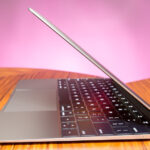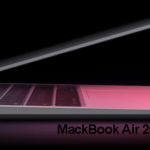How to choose the best MacBooks for you: We have a separate guide on how to decide which MacBook is right for you. The TL;DR version is to consider how much power you need and what you are willing to spend.

For us, the MacBook Air is an easy choice. It comes in at $999 yet sports similar performance and endurance to the MacBook Pro thanks to its M1 processor. It’s also the most portable of the bunch, and the improved 13.3-inch display is great for watching TV shows or movies.
If you want a bit more endurance and better performance over longer periods, get the 13-inch MacBook Pro with M1. It lasts for a remarkable 16 hours and 32 minutes on a charge and scored benchmark numbers that blow away the competition.
It’s not so easy for us to recommend Apple’s other options. The 13-inch MacBook Pro with four Thunderbolt 3 ports and the 16-inch MacBook Pro are stuck with Intel chips that are less powerful than M1 and don’t support iOS and iPadOS apps. Apple is expected to release new versions with Apple Silicon in the coming weeks, so we suggest you try holding out until then.
What is the best MacBook?
From underpowered to one of the fastest ultrathin laptops around, the new MacBook Air with M1 is the best Mac for most people. It takes a familiar design and turbocharges it with record-setting performance and all-day battery life. Along with those speed and endurance boosts, the new M1 chip brings iOS and iPadOS apps to Mac for the first time ever. With M1, there is little reason to skip out on the MacBook Air. How to choose the best MacBooks.
That said, if you need better-sustained performance, you might want to opt for the MacBook Pro. Where the MacBook Air is finless, the MacBook Pro has a traditional cooling system to allow you to run demanding programs for hours without worrying about overheating. Like the MacBook Air, the MacBook Pro has an incredibly fast SSD and runs on Apple’s gorgeous new Big Sur OS.
What about the Intel MacBook that wasn’t updated with M1 yet? Well, they aren’t completely irrelevant (yet). So far, Apple only refreshed the MacBook Pro with two Thunderbolt 3 ports. If you need an additional pair of inputs, the company still sells the top-tier model with four Thunderbolt 3 connections. But again, it runs on Intel chips, which don’t get nearly the same performance or endurance as the M1.
Then there is the 16-inch MacBook Pro. Once the most powerful of the bunch, this monster doesn’t look as mighty now that the MacBook Air and MacBook Pro were given such a speed boost by the M1 chip. That doesn’t mean it’s not a good laptop. It has a great 16-inch panel, amazing speakers and the most modern design of the bunch. And despite running on Intel, the battery life is great.
Our advice? If you need a laptop now, go with the MacBook Air or MacBook Pro with M1. If you can wait and need more power or ports, give Apple a few months to release new versions of the 16-inch MacBook Pro and potentially a new 13-inch or 14-inch MacBook Pro with additional Thunderbolt ports. How to choose the best MacBooks.
How we test MacBook laptops
We put MacBook through extensive benchmark testing — both synthetic and real-world — before they end up in the hands of our reviewers. We evaluate everything from speed and battery life to display brightness, speaker volume and system heat.
We use a Klein K10 calorimeter to detect the brightness and RGB colour gamut of a laptop’s display. For performance benchmarking, we run the laptop through a gauntlet of benchmarks, including Geek bench 4.3 and 5.0 and 3DMark professional graphics tests.
To determine real-world performance, we task the laptop to convert a 4K video to 1080p resolution and to duplicate a 4.97 GB multimedia file. Our real-world graphics test is the Dirt 3 benchmark with medium settings and 1080p resolution.
We also run heat tests by playing a 15-minute full-screen video and our battery test consists of continuous web surfing over Wi-Fi at 150 nits of brightness. We consider everything over the category average (8 hours and 36 minutes) to be a good result. Of course, these tests are complemented with hands-on testing from our reviewers.






